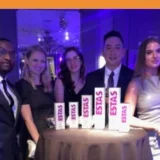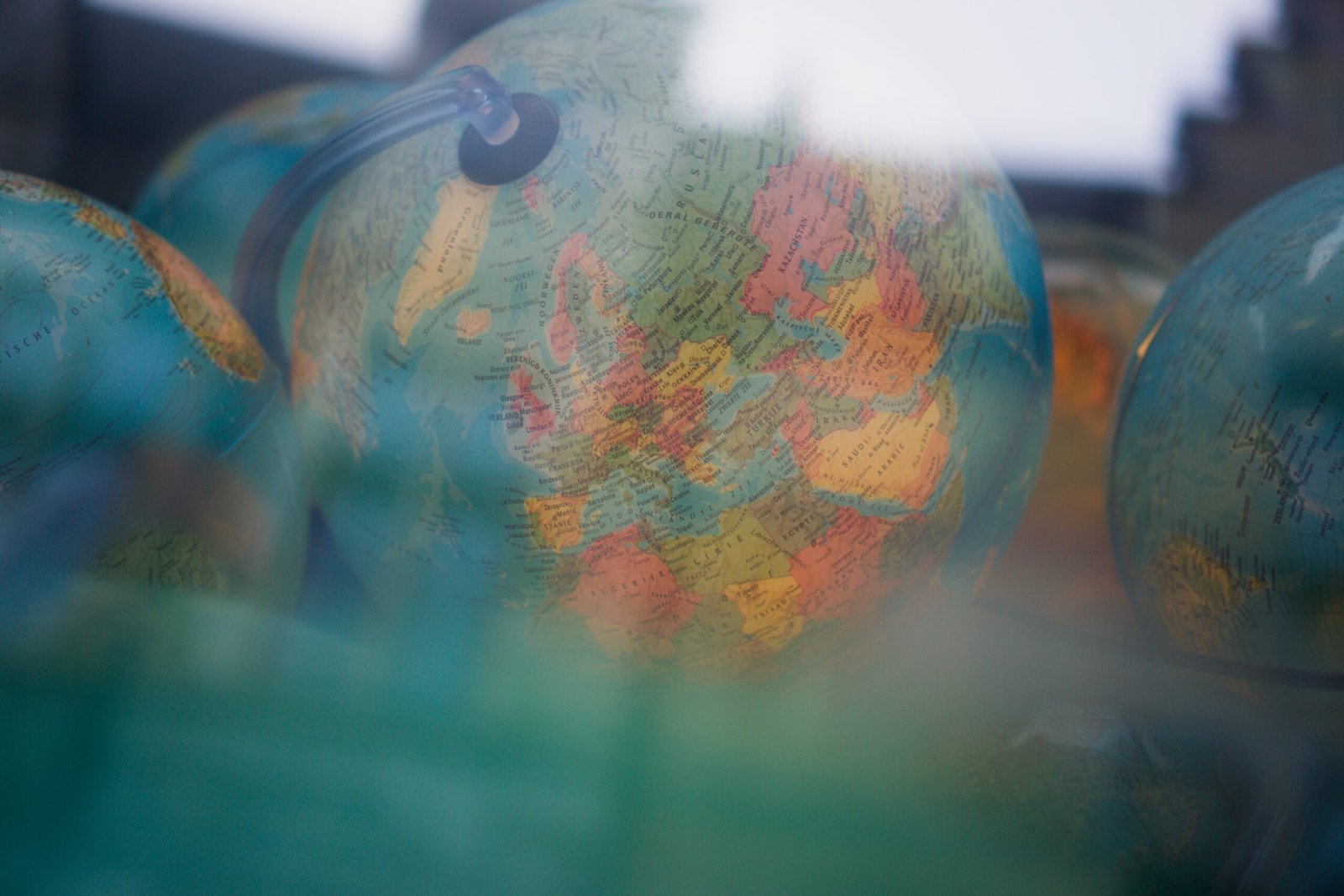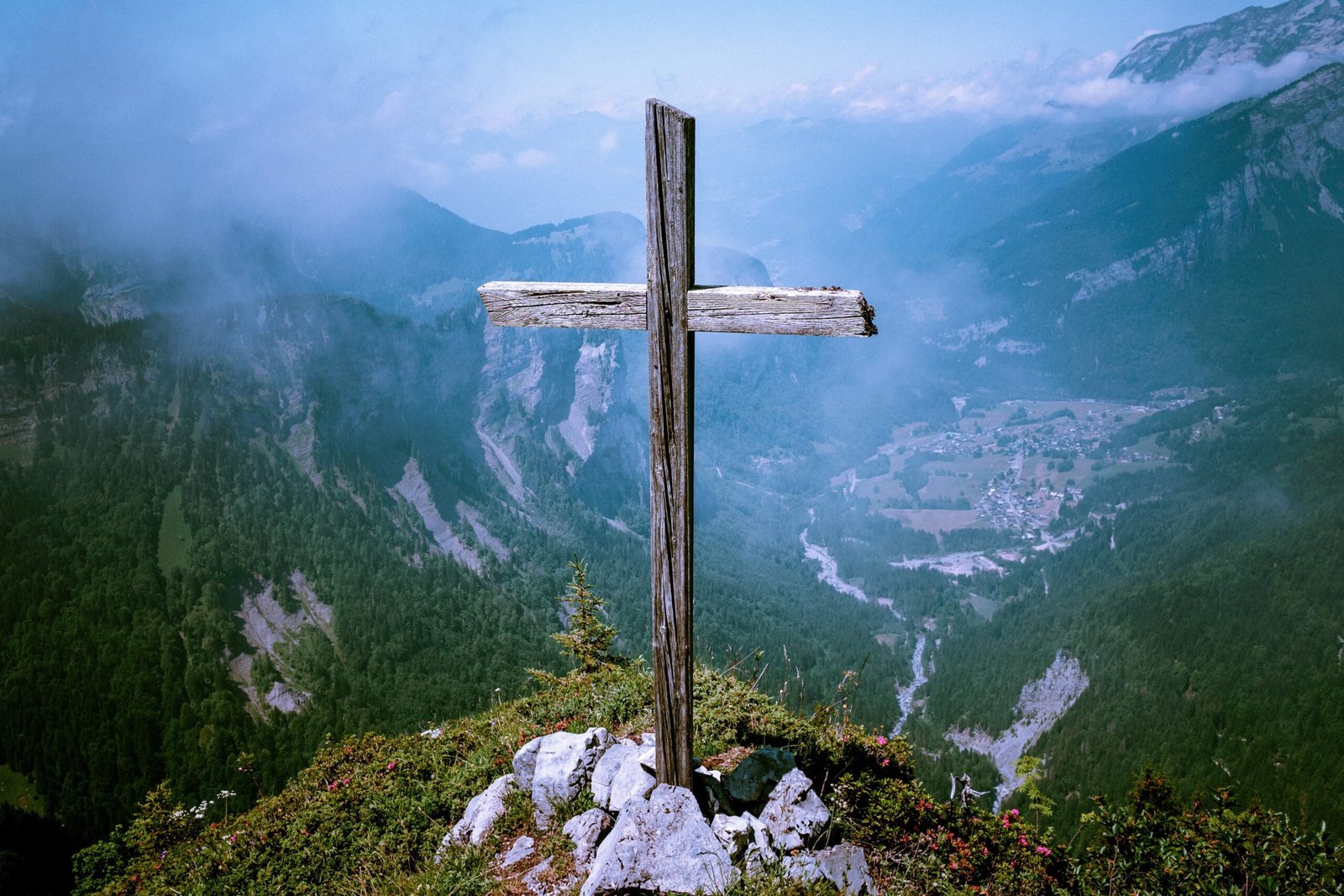Sikka moves to new location, but local culture remains at art festival’s core
Since its inception in 2011, the Sikka Art and Design Platform has been synonymous with its venue, Al Fahidi, even taking its name from the narrow alleyways of the historical neighbourhood.
However, this year, the event has moved.
At face value, it is an almost unfathomable move for the festival. But its new home Al Shindagha, once Dubai’s hub and home to its ruling family, retains the spirit of the festival’s original address.
It has the narrow alleyways, museums that pay homage to local traditions and customs, barajeel wind towers and architectural vernacular.
Nevertheless, it is a more spacious address, spread on the banks of the creek and overlooking the dhows as well as the modern architecture. Its views are some of the best and most unique in the city. The festival still offers a chance to simultaneously discover old Dubai as well as a host of emerging artists, with works that range from sprawling installations in the district’s alleys inspired by traditional designs to pieces that tackle generative artificial intelligence.
Running until March 3, the festival features more than 100 artworks across 14 traditional houses. It also has a line-up of musical performances, including singers, violinists and qanun players.
However, one of the festival’s most inviting components is its workshops. Most are free to attend and are a great starting point to learn a new craft, from rug tufting to pottery and music.
Al Jalila Cultural Centre for Children is presenting a variety of workshops through collaborations with the Centre for Musical Arts, Igraa Arabic Language Centre, Sxill Lab, Ibento, as well as local artists. A special section is dedicated to Bait Al Khazaf, featuring ceramic and sculptural works by artists in the UAE.
“We decided to bring the concept of a pop-up centre to Sikka,” Budoor Abdulqader, programmes team leader at Al Jalila Cultural Centre for Children, says. “Our house is divided into two sections. One is dedicated to workshops available to the public. Workshops from pottery, candle making, perfumery, arts and crafts for children, rug tufting.”
While some of the workshops are specifically designed for children, most can be attended by adults as well. “We tried to include something for everyone,” Abdulqader says. “We invite communities to come in and experiment, and if they like what they see, they are able to come to the centre, where there are more intensive courses.”
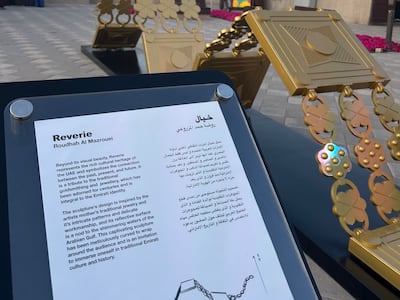
Modern twists on traditional designs and motifs are a theme of many of the artworks. In the installation Reverie, Roudhah Al Mazrouei presents traditional Emirati jewellery in large-scale form, letting viewers appreciate the intricacies of goldsmithing techniques and motifs.
Students from the Higher Colleges Technology in Dubai, meanwhile, are also showcasing pieces that bring a novel look at local customs. There are digital artworks that blend polka-dotted patterns with pearls. An installation by Anood Al Khoori, The Journey of Spices, uses fabrics and spices to highlight the deep-rooted connections between Indian and Emirati cultures.
Another installation by fellow student Nawal Ahmed Al Blooshi, titled Between the Languages, is a homage to the eclectic nature of human language, celebrating differences as well as similarities.
“There are common threads and sounds that join languages from around the world,” Al Blooshi says. The installation features draped textiles, on which are embroidered letters from various languages as well as circular mirrors.
“Language is more than just a means of communication,” she says. “It’s our lens to the world and a mirror of our emotions and ideas.”
In another section, Sara AlKhayyal presents Camel, a layered installation that reflects upon the year-long spent on dromedaries. The installation is divided into three panels. Its outer is fitted with camel skins that range from soft and fine textures to curled tufts. As visitors enter through the doorway, they come across an acrylic variation of the outer wall, before finally facing a textile wall on which imprinted shapes and symbols allude to several facts of the desert animals.
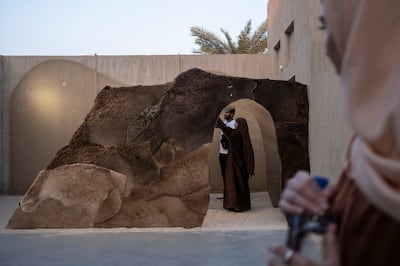
“I wanted to find interesting information on camels, more than the stereotypical information that we already know, in order to understand the greatness of this creature,” AlKhayyal says. “The last layer I call the camel cave. It is inspired by cave paintings.
“It has a lot of the symbols they use to brand camels, called wasm. The archive that I collected this past year consists of data, facts and hypotheses.”
One of the most captivating exhibitions is that of Realiity. The collective features Ahmad Al Attar, Mohamad AlHammadi, Musab AlHammadi and Omar AlHammadi. The group have previously presented at Sikka, but this exhibition brings Realiity’s aim of merging technology, art and heritage to novel dimensions.
In Drum Discourse, motorised drums are fitted to pink pillars. Each drum randomly begins a pirouetting percussive dance that then echoes, syncopates and at times, aligns with the rhythms coming from the other pillars.
In Sadu Flux, the four artists take on the traditional embroidery form, fitting it in a mesmerising motorised installation, with circular cutouts that whirl and gyrate in and out of the pattern.
Playfulness seems to be a generative force for the collective, who with their work, make batteries from dates, ponder on time through the lens of emotion and use bodily electricity to make music. But perhaps the most arresting part of Realiity is when the group use AI to add colour and motion to old photographs. It is a section that presents the history of the UAE in a way not seen before.
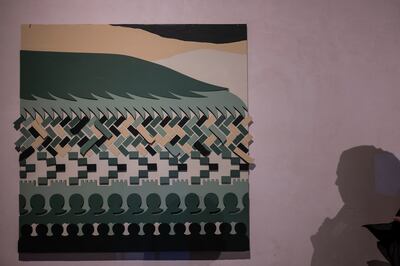
As with every year, what Sikka excels most at is that the festival is a motley mirror that reflects upon the experiences of living in Dubai and the wider region.
Tradition and culture are embedded within the art. In Once Upon a Land, artists Sara AlZaabi, Salwa AlRais, Hessa AlZaabi and Afra Almheiri highlight seven elements of UAE culture in a work that verges on a patterned and aesthetically pleasing abstraction. Falcon wings, Sadu, the dhow, fronds of palm trees, forts and dallah come together in cohesive greens, blacks and eggshell hues. Made out of cardboard, the work is inspired by the values ascribed in the UAE centennial 2071.
Koushal Choudhary, meanwhile, pays homage to the varying frequencies of colour with his Garden of Consciousness. Comprising several sculptures made from recycled materials, from textiles to paint buckets and LEDs, Choudhary says he’s been eager to showcase works at Sikka since he moved to Dubai two years ago.
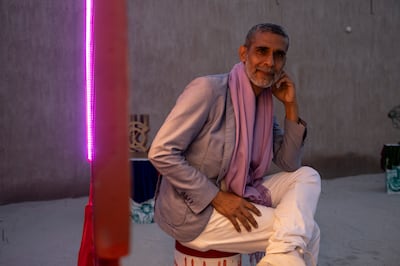
During the opening of the festival, the artist was sitting at the entrance of the garden, saying he enjoyed witnessing people gravitate towards a particular sculpture and colour, wondering what that hint was about their demeanours. Mawaheb, on the other hand, is returning to the festival, with an exhibition space that features what the studio’s artists, who are people of determination aged 18 and above, had created for Cop28.
The space is fitted with four large canvases, each dedicated to an element and painted by individual artists including Namrata Pagarani, James Casaki, Angelina Lawless and Aarti Shah. Totems made out of fabrics and clouds created from plaster also decorate the space and were collectively made by the two dozen artists at Mawaheb.
While Sikka has changed venues, moving closer to the creek’s water and away from the huddle of Al Fahidi, the festival has not lost its sense of intimacy. If anything, the new location recharges the event and gives visitors the chance to explore another of the emirate’s important historical districts, as well as Al Shindagha Museum, which provides insight into Dubai’s beginning abreast the creek.
The festival’s mission, of being a family-friendly one that blends art with tradition, is still at the core and the event retains its uniqueness within the art season of being an excuse to rediscover old Dubai along with some of its new artistic talents.
Sikka Art and Design Platform is running at Al Shindagha, Dubai, until March 3. More information is available at @sikkaplatform on Instagram
Updated: February 24, 2024, 2:01 PM






